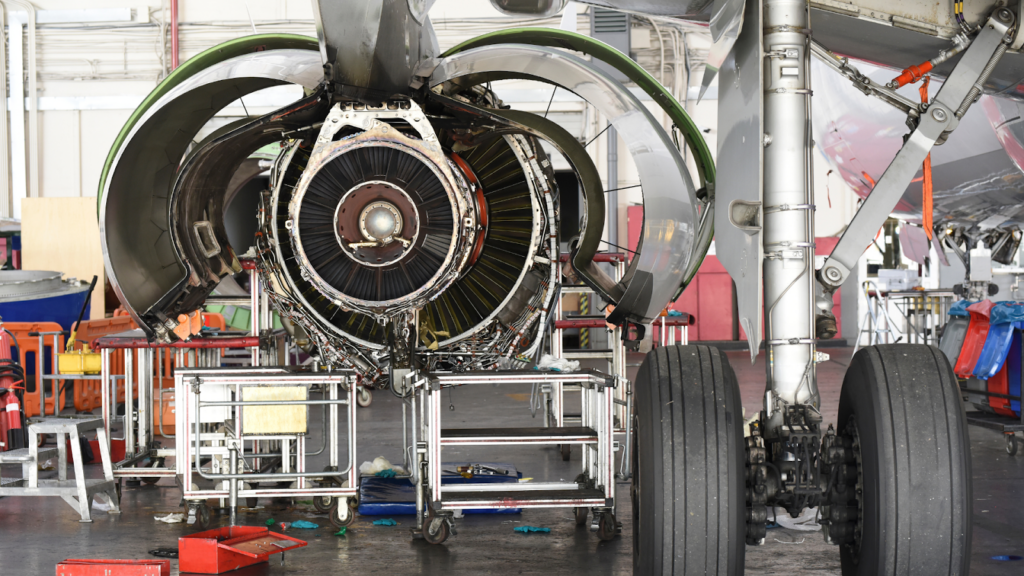MIL-PRF-23377 is a specification established by the United States Department of Defense outlining the requirements for a two-component epoxy primer used in aerospace and military applications. This primer is designed to provide corrosion protection, adhesion, and resistance to solvents and hydraulic fluids to various substrates, especially metals. It serves as a crucial first step in the coating process, ensuring that the final paint adheres properly and provides long-lasting protection under harsh conditions.
The specification is detailed and thorough, ensuring that coatings meet the rigorous standards necessary for military equipment and aircraft. Understanding MIL-PRF-23377 is essential for manufacturers, suppliers, and maintenance teams working with military-grade equipment to ensure compliance and optimal performance.
Understanding The Importance Of MIL-PRF-23377
Corrosion Resistance
Military vehicles and equipment are often exposed to harsh environments, including saltwater, desert heat, and tropical humidity. MIL-PRF-23377 primer provides a protective layer that significantly reduces the risk of corrosion, thereby extending the lifespan of the equipment and maintaining its readiness for operation.
Adhesion And Durability
The primer acts as an intermediary layer that enhances the bond between the substrate and the topcoat. This adhesion is crucial for the durability of the coating system, ensuring that it remains intact and effective through rigorous use and environmental exposure.
Standardization And Reliability
By adhering to a specified standard, manufacturers and maintenance teams can ensure a consistent level of quality and performance. This standardization is crucial in military applications where reliability can be a matter of life and death. MIL-PRF-23377 sets a clear benchmark for primer performance, ensuring that all treated equipment meets the same high standards.
Cost-Effectiveness
While high-quality coatings may initially seem expensive, the use of MIL-PRF-23377 compliant primers can lead to significant cost savings over time. By preventing corrosion and improving coating longevity, the need for frequent repairs and replacements is reduced, thereby saving resources and operational downtime.
Benefits Of Using MIL-PRF-23377
Enhanced Corrosion Protection
One of the primary benefits of using MIL-PRF-23377 primer is its exceptional ability to protect against corrosion. This is vital for equipment used in marine environments or areas with high humidity, where metal parts are particularly susceptible to rust and decay. By forming a robust barrier, the primer extends the life of the equipment, ensuring that it remains operational and free from corrosion-induced damage over longer periods.
Improved Adhesion And Coating Integrity
The primer is engineered to provide excellent adhesion between the substrate and the topcoat. This strong bond is essential for the durability of the paint system, ensuring that the protective coatings remain intact and effective against wear and tear, thereby reducing the need for frequent touch-ups and maintenance.
Uniformity And Consistency
Adhering to the MIL-PRF-23377 specification ensures uniformity in the application process and in the performance of the coating. This consistency is critical for maintaining the quality and reliability of military equipment across different environments and operational scenarios.
Cost Savings
While the initial costs associated with using high-quality MIL-PRF-23377 compliant primers may be higher, the long-term savings are significant. The extended lifecycle of equipment and reduced maintenance requirements translate into lower operational and repair costs, making it a cost-effective solution for the defense sector.
Safety And Reliability
Equipment coated with MIL-PRF-23377 compliant materials is more reliable and safer to use. The primer enhances the structural integrity and operational safety of the equipment, crucial in high-stakes environments where the performance and reliability of military hardware can be the difference between success and failure.
Compliance With Defense Standards
Utilizing MIL-PRF-23377 primers ensures compliance with strict military standards and regulations, which is essential for any company or organization involved in supplying or maintaining defense-related equipment. This compliance not only meets legal and contractual obligations but also reinforces a commitment to quality and reliability.
Application Methods For MIL-PRF-23377
Surface Preparation
Before applying the primer, it’s essential to prepare the surface properly. This includes cleaning, degreasing, and removing any rust, scale, or old paint. The surface should be dry and free of contaminants to ensure optimal adhesion. Sandblasting or manual sanding may be required to achieve a suitable surface profile.
Mixing The Primer
MIL-PRF-23377 is a two-component system consisting of a base and a curing agent. These components must be mixed thoroughly according to the manufacturer’s instructions. The correct ratio and thorough mixing are critical to ensure the primer’s performance and effectiveness.
Application Techniques
The primer can be applied using various techniques such as brushing, rolling, or spraying. Spraying is the most common method in industrial settings, providing a uniform and efficient coating. However, the method chosen will depend on the specific project and equipment available. Ensure that the application method used is in line with the specifications for the best results.
Curing And Drying Times
After application, the primer needs adequate time to cure and dry. The specific curing time can vary based on environmental conditions such as temperature and humidity. It’s crucial to allow the primer to fully cure before applying any topcoats to ensure proper adhesion and coating performance.
Inspection And Quality Control
Once the primer has dried, inspect the coating for uniformity, thickness, and any signs of defects such as runs or bubbles. Quality control is vital to ensure that the application meets the stringent MIL-PRF-23377 standards.
Safety Measures
Always follow safety guidelines when applying MIL-PRF-23377, including wearing appropriate personal protective equipment (PPE) such as gloves, goggles, and respirators. Ensure proper ventilation in the workspace to avoid inhalation of harmful fumes.
How To Comply With MIL-PRF-23377 Standards
Familiarize With The Specification
The first step to compliance is understanding the detailed requirements outlined in the MIL-PRF-23377 document. This includes the chemical composition, physical properties, and performance criteria of the primer. Suppliers and manufacturers should obtain the latest version of the specification and thoroughly review the technical details.
Source Quality Materials
Compliance begins with the use of proper materials. Ensure that all raw materials used in the formulation of the primer meet the specified standards. This may involve sourcing materials from certified suppliers and conducting quality checks to verify their purity and suitability.
Implement Stringent Quality Control Processes
Establishing robust quality control (QC) procedures is critical to ensure every batch of primer adheres to the MIL-PRF-23377 standards. This includes testing for viscosity, curing time, adhesion, and corrosion resistance. Regular QC checks throughout the production process can help identify and rectify any deviations from the standard.
Maintain Proper Documentation
Proper documentation is essential for compliance. This includes detailed records of material sourcing, production processes, QC tests, and any corrective actions taken. Documentation provides traceability and is crucial during audits or inspections.
Ensure Correct Application Methods
Compliance is not only about producing the primer according to standards but also ensuring it is applied correctly. Provide clear instructions and training to end-users on proper surface preparation, mixing ratios, application methods, and curing times.
Regular Audits And Inspections
Regular internal audits and inspections can help ensure ongoing compliance with MIL-PRF-23377 standards. Additionally, obtaining third-party certifications or undergoing external audits can reinforce credibility and adherence to quality standards.
Stay Updated With Changes
Military specifications can be updated or revised. Staying informed about any changes to MIL-PRF-23377 and adjusting your processes accordingly is crucial for maintaining compliance.
Frequently Asked Questions
What types of environments is MIL-PRF-23377 primer designed for?
MIL-PRF-23377 primer is specifically designed for harsh environments including high humidity, saltwater exposure, and extreme temperatures. It’s ideal for aerospace and military applications requiring robust corrosion protection.
Can MIL-PRF-23377 primer be used on non-metal substrates?
While primarily designed for metal substrates, the effectiveness of MIL-PRF-23377 primer on non-metal surfaces depends on the specific substrate and environmental conditions. Consult technical data sheets or a professional for specific applications.
How do I ensure the primer is mixed correctly?
Follow the manufacturer’s instructions carefully for the correct mixing ratio of base to curing agent, and ensure thorough mixing to achieve optimal performance and adhesion.
What are the recommended application methods for MIL-PRF-23377 primer?
The primer can be applied by brushing, rolling, or spraying. The choice of application method depends on the project’s specific requirements and available equipment, with spraying being common in industrial settings.
How long does the primer take to cure?
Curing times vary based on environmental conditions such as temperature and humidity. Consult the product datasheet for specific curing times and ensure the primer is fully cured before applying topcoats.
What safety precautions should be taken when applying MIL-PRF-23377 primer?
Always wear appropriate PPE, including gloves, goggles, and respirators. Ensure the workspace is well-ventilated to avoid inhalation of fumes.
How do I inspect the applied primer for quality?
After curing, inspect the primer for uniform coverage, proper thickness, and absence of defects like runs or bubbles. Adherence to quality standards is crucial for the effectiveness of the coating.
What is the role of surface preparation in the application of MIL-PRF-23377 primer?
Proper surface preparation, including cleaning, degreasing, and removing old paint or rust, is crucial for ensuring optimal adhesion and performance of the primer.
How does using MIL-PRF-23377 primer contribute to cost savings?
Although the initial costs might be higher, using MIL-PRF-23377 primer can lead to long-term savings by reducing the frequency of repairs and replacements due to its superior corrosion protection and durability.
What should I do if the specifications for MIL-PRF-23377 change?
Stay informed about updates to the MIL-PRF-23377 specification and adjust your materials, processes, and application methods accordingly to maintain compliance.

